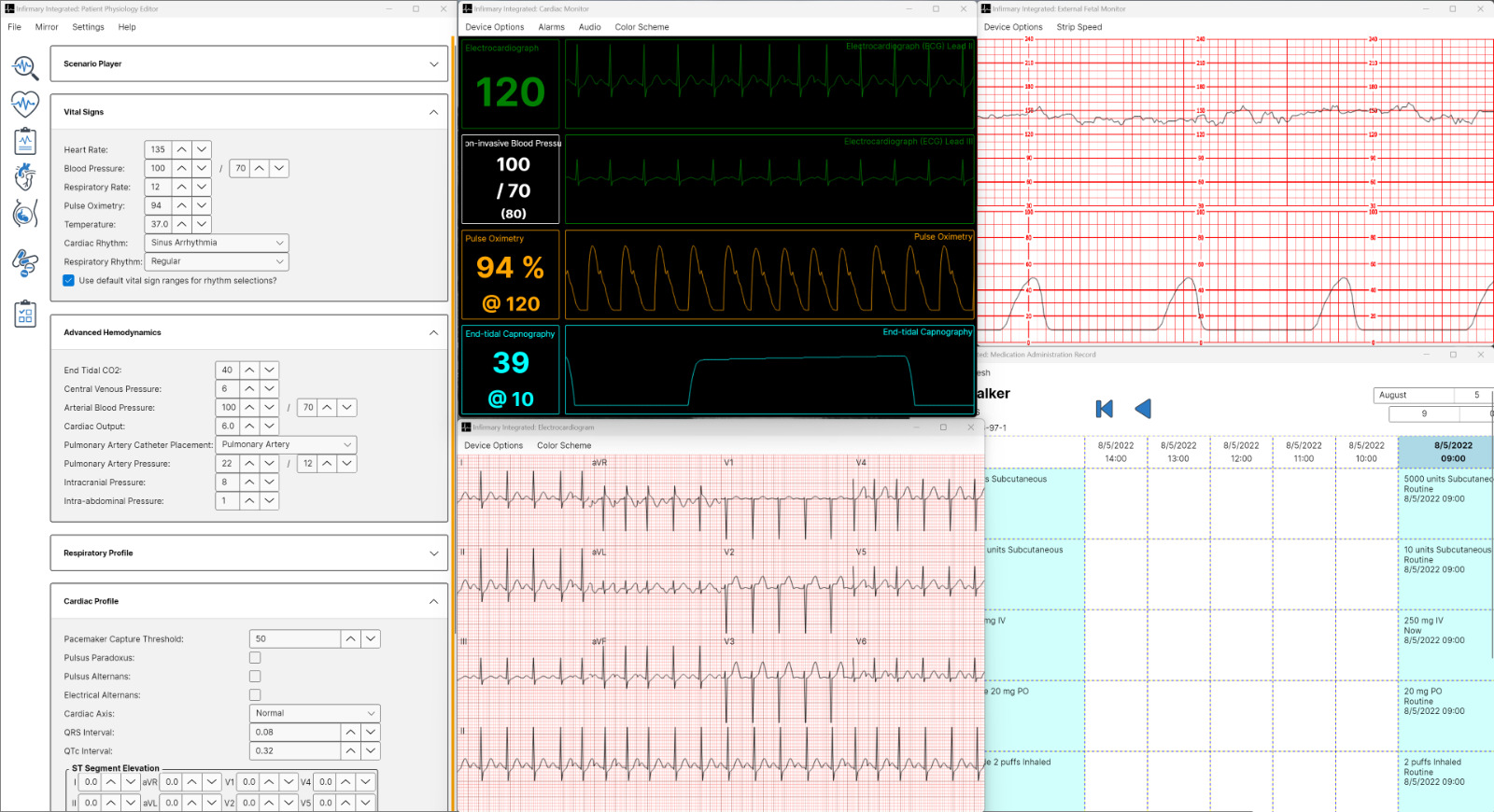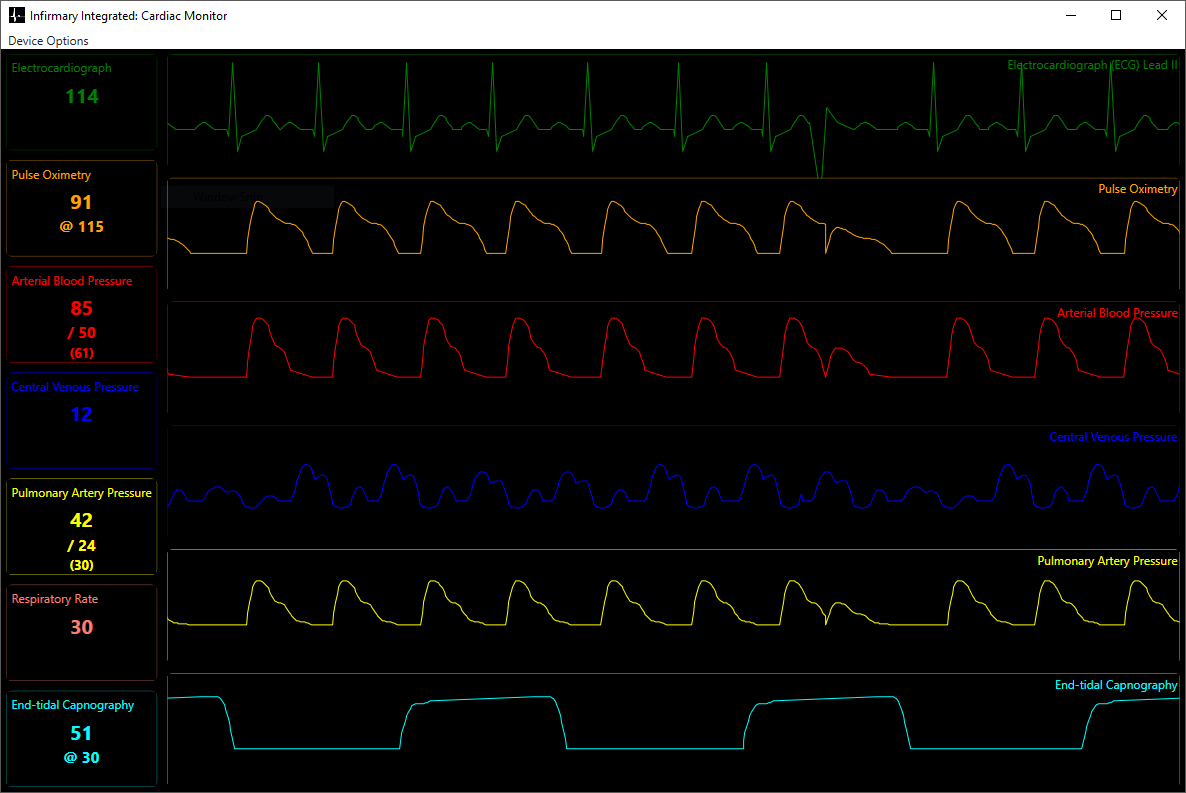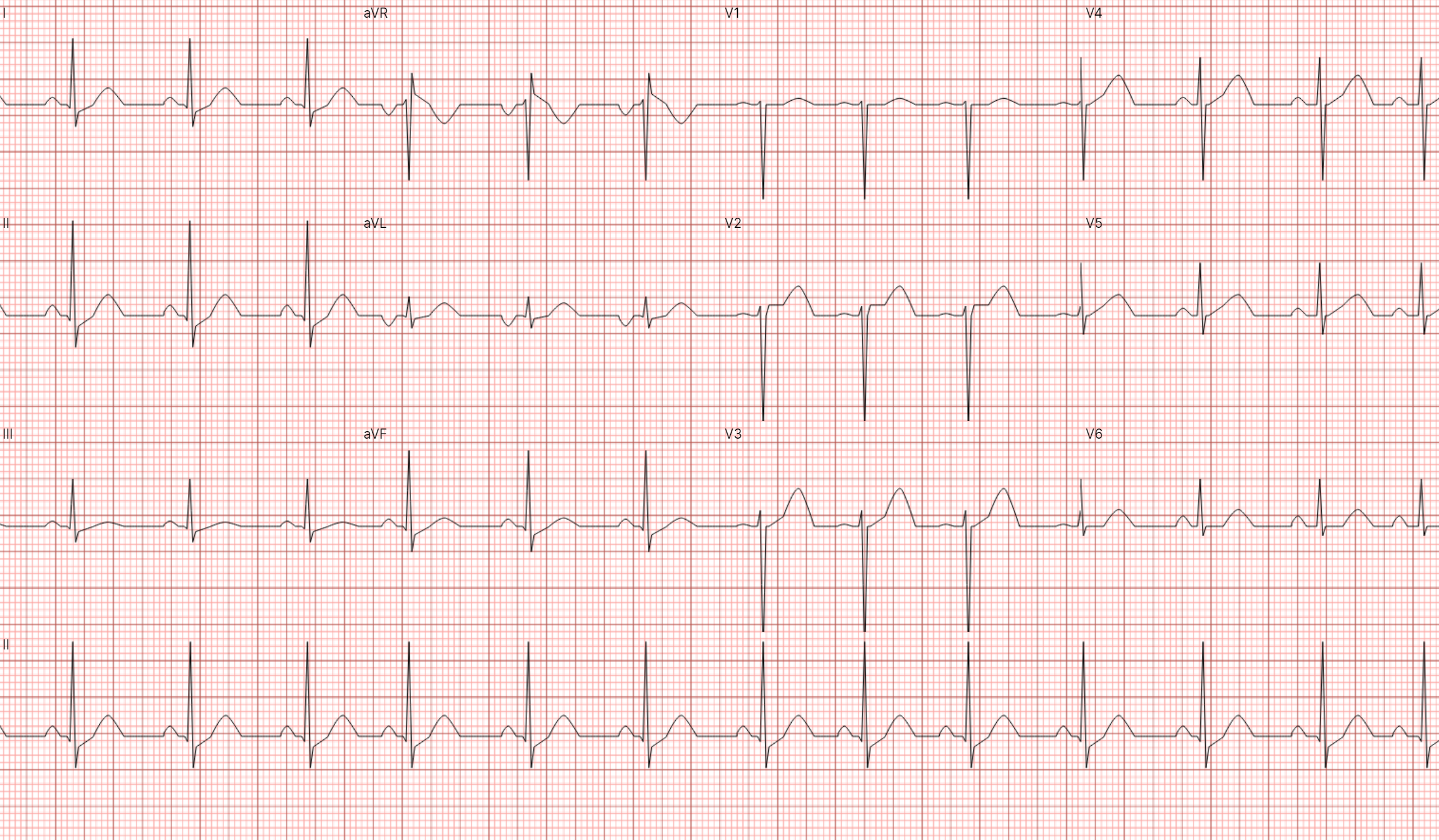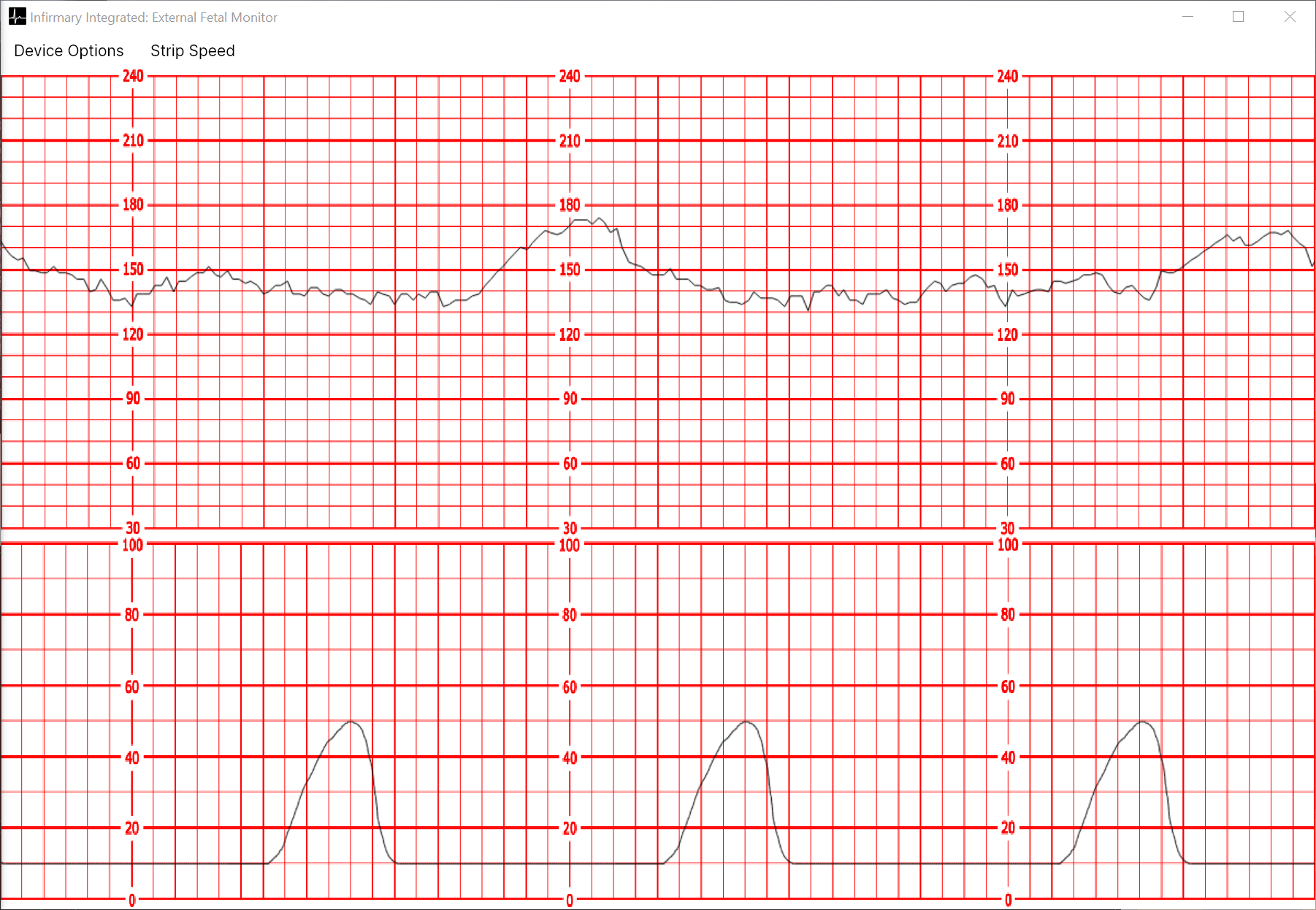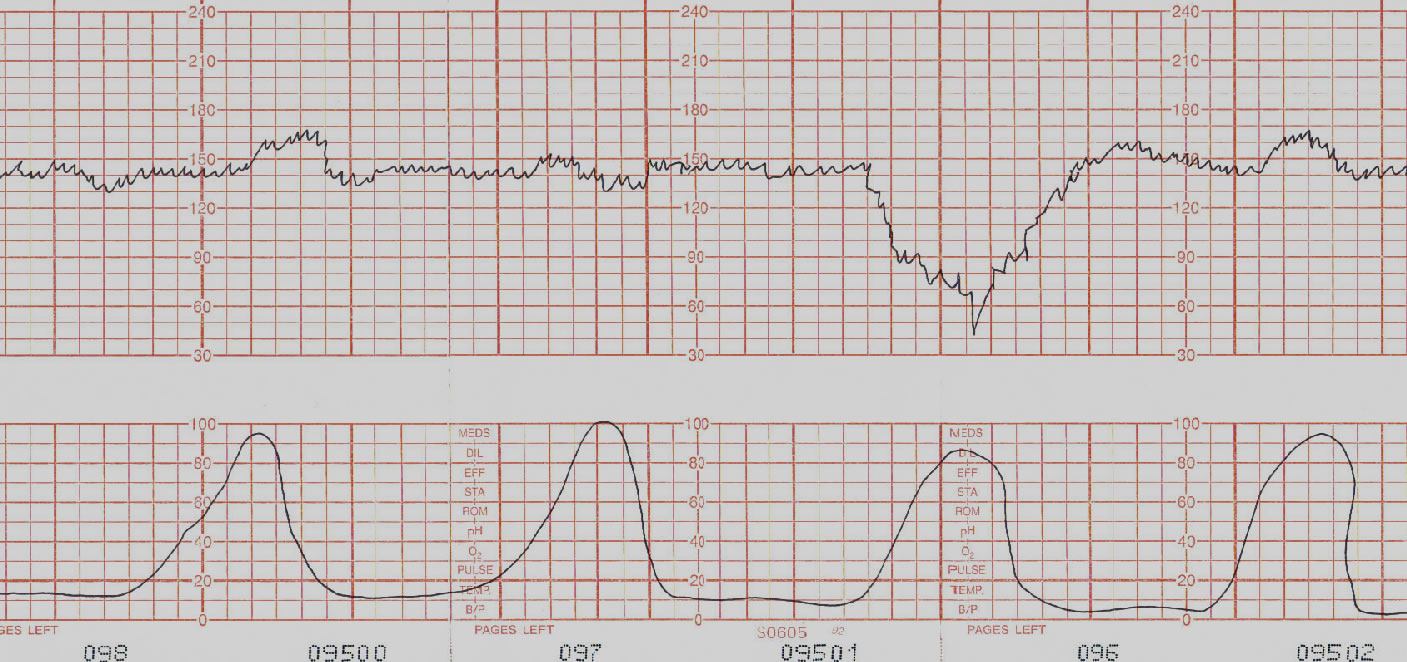Infirmary Integrated
(c) 2017-2024, Ibi Keller (tanjera)
Infirmary Integrated is free and open-source software suite consisting of the Infirmary Integrated Simulator, Scenario Editor, and Development Tools designed to advance healthcare education for medical and nursing professionals and students. Developed as in-depth, accurate, and accessible educational tools, Infirmary Integrated can meet the needs of clinical simulators in emergency, critical care, obstetric, and many other medical and nursing specialties.
Infirmary Integrated contains a free simulator for healthcare devices to aide in medical and nursing education. By simulating medical devices such as a defibrillator or external fetal monitor, students can practice reading tracings, interpreting waveforms, and starting interventions. Educators can use Infirmary Integrated to enhance simulations in a lifelike environment similar to patient care areas, allowing educators to simulate patient presentations and hemodynamic states ranging from simple simulations to extremely complex scenarios. Infirmary Integrated is developed to be clinically accurate and contain relevant content. Additionally, Infirmary Integrated is free and open source software in order to be accessible for healthcare professionals around the world.
Infirmary Integrated currently functions as a simulator for the following healthcare devices:
- Cardiac monitor
- Defibrillator
- 12-lead electrocardiograph (ECG)
- Intra-aortic balloon pump (IABP)
- External fetal monitor, cardiotocograph (EFM/CTG)
- Medication administration record (MAR)
Main features in Infirmary Integrated include:
- Realistic waveforms draw according to multiple factors, accounting for:
- Atrial and/or ventricular contractions
- Aberrant/ectopic beats and resulting decreased pulsatility
- Intrathoracic pressure, depending on mechanical or spontaneous ventilation
- Able to pause devices to better analyze waveforms or create screenshots
- Visual and audio alarms realistically simulate devices for enhanced clinical realism
- Advanced modeling algorithms allow for on-the-fly changes to hemodynamic parameters with a smooth and responsive simulation
- Able to create and play scenarios where the patient's condition changes and progresses
- Students can react to changing patient conditions with pre-made scenario options
- Instructors can guide students through simple or complex pre-made patient presentations and disease progressions
- Able to mirror patient data across multiple computers
- A teacher can run a simulation and automatically broadcast it across the internet
- Students can subscribe to a broadcasted simulation and their screens will automatically synchronize
- Broadcasting is seamlessly and securely processed through Infirmary Integrated's server
- Able to save simulations to files (.ii extension) that can distributed or saved
- Device information and options are also saved in simulation files
- Multiple color schemes can be selected for each device simulator
- "Dark" mode for realistic green-on-black ECG and monitor tracings
- "Light" mode for high-contrast uses such as on an overhead projector
- Some devices allow for "Grid" mode, replicating an ECG traced on gridded ECG paper
And Infirmary Integrated can simulate hemodynamic and other readings including:
- Heart rate (HR)
- Temperature (T)
- Blood pressure (NIBP non-invasive and invasive ABP via arterial line)
- Respiratory rate (RR)
- Pulse oximetry (SpO2, pulse oximeter plethysmograph)
- End-tidal capnography (ETCO2)
- Central venous pressure (CVP)
- Pulmonary artery pressures and waveforms (Swan-Ganz catheter pressures)
- Including all pressures and waveforms to simulate catheter placement and wedging
- Cardiac Output (CO)
- Intracranial pressure (ICP) factoring compliance in the waveform
- Intra-abdominal pressure (IAP, bladder pressure)
- Intra-aortic balloon pump augmentation pressures
- Cardiac axis deviation, pulsus paradoxus, pulsus alternans, and electrical alternans on waveforms
- QRS interval adjustment and QTc interval adjustment for simulating various waveform morphologies
- ST-segment elevation/depression and T-wave elevation/depression on all 12 ECG leads
- Defibrillation, cardioversion, and transcutaneous pacing
- Fetal heart rate (FHR), fetal heart rate variability, and uterine contractions (frequency and duration)
Also, Infirmary Integrated simulates the following cardiac rhythms with waveforms and corresponding vital signs for scenario management:
- Asystole
- Atrial Fibrillation
- Atrial Flutter
- AV Block, 1st Degree
- AV Block, 3rd Degree
- AV Block, Mobitz II
- AV Block, Wenckebach
- Bundle Branch Block
- CPR Artifact
- Idioventricular
- Junctional
- Pulseless Electrical Activity
- Sick Sinus Syndrome
- Sinus Arrhythmia
- Sinus Rhythm
- Sinus Rhythm with Arrest (Sinoatrial Arrest)
- Sinus Rhythm with Bigeminy
- Sinus Rhythm with Trigeminy
- Sinus Rhythm with PACs
- Sinus Rhythm with PJCs
- Sinus Rhythm with PVCs Multifocal
- Sinus Rhythm with PVCs Unifocal
- Supraventricular Tachycardia
- Ventricular Fibrillation Coarse
- Ventricular Fibrillation Fine
- Ventricular Standstill
- Ventricular Tachycardia Monomorphic Pulsed
- Ventricular Tachycardia Monomorphic Pulseless
- Ventricular Tachycardia Polymorphic
Infirmary Integrated also simulates the following respiratory rhythms:
- Agonal
- Apnea
- Apneustic
- Ataxic
- Biot
- Cheyne-Stokes
- Regular
Infirmary Integrated also simulates the following fetal heart rhythms:
- Baseline (minimal variability)
- Accelerations
- Early Decelerations
- Late Decelerations
- Variable Decelerations
Infirmary Integrated also simulates features of an electronic health record (EHR) including:
- Navigating drug orders and doses due on an electronic Medication Administration Record (MAR)
Infirmary Integrated also supports full localization (translation) for the following languages:
- አማርኛ (Amharic)
- عربى (Arabic)
- 中文 (Chinese)
- Deutsche (German)
- English
- Español (Spanish)
- فارسی (Farsi)
- Français (French)
- עברית (Hebrew)
- हिंदी (Hindi)
- Italiano (Italian)
- 한국어 (Korean)
- Português (Portuguese)
- русский (Russian)
- Swahili (Kiswahili)
For more information, feel free to visit http://www.infirmary-integrated.com/
Licensed under the Apache License, Version 2.0 (the "License"); you may not use this file except in compliance with the License. You may obtain a copy of the License at
http://www.apache.org/licenses/LICENSE-2.0
Unless required by applicable law or agreed to in writing, software distributed under the License is distributed on an "AS IS" BASIS, WITHOUT WARRANTIES OR CONDITIONS OF ANY KIND, either express or implied. See the License for the specific language governing permissions and limitations under the License.

